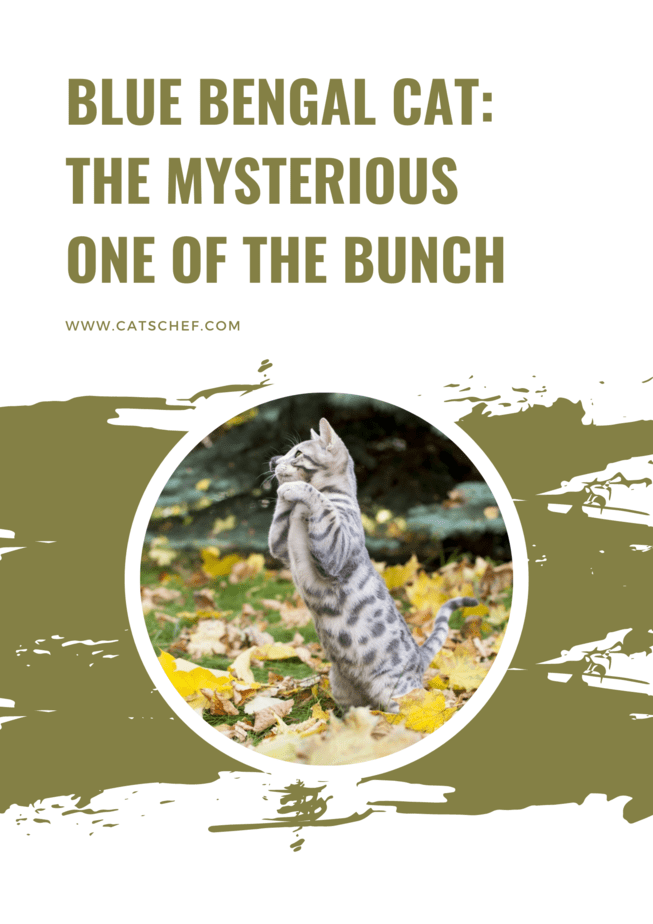As cute as they are, now and then, Bengal cats make you reevaluate everything that has brought you to that moment. When they look at you like they’re craving a million snuggles, they scratch your eyes out when you try to pet them. Why, then, are you thinking of getting a Blue Bengal cat!?
Oh, Bengals are a force to be reckoned with! Who wouldn’t absolutely adore them knowing they’re within spitting distance from belonging to the wilderness? Who wouldn’t want to become a parent to one of these Liliputian leopards knowing they’re affectionate and appreciative of everything you do?
On the other hand, who would answer “Yes!” to these questions knowing that Bengal cats have the most mysterious purrsonalities?
Knowing that they don’t shy away from scratching your furniture and knocking down everything that dares bother them? Knowing that they never cease to surprise you with gifts of dead cockroaches and half-eaten geckos?
Okay, okay… We might have gone overboard with the “Bengals are tough to deal with and aren’t the right for everyone” rhetoric.
Truth be told, Bengal beasts are some of the smartest fluffers you may ever have the pleasure of parenting. They are incredibly intelligent, sassy enough, and a little smart-arsey to make you beg for more.
Turns out that’s what you’re doing here (begging for more, of course)! Whether you’re looking for a Blue Bengal BFF or a cat with the most mysterious-colored markings, you came knocking on the right door. We’ve gathered everything you need to know about these beautiful bundles of energy!
What are Blue Bengal cats?
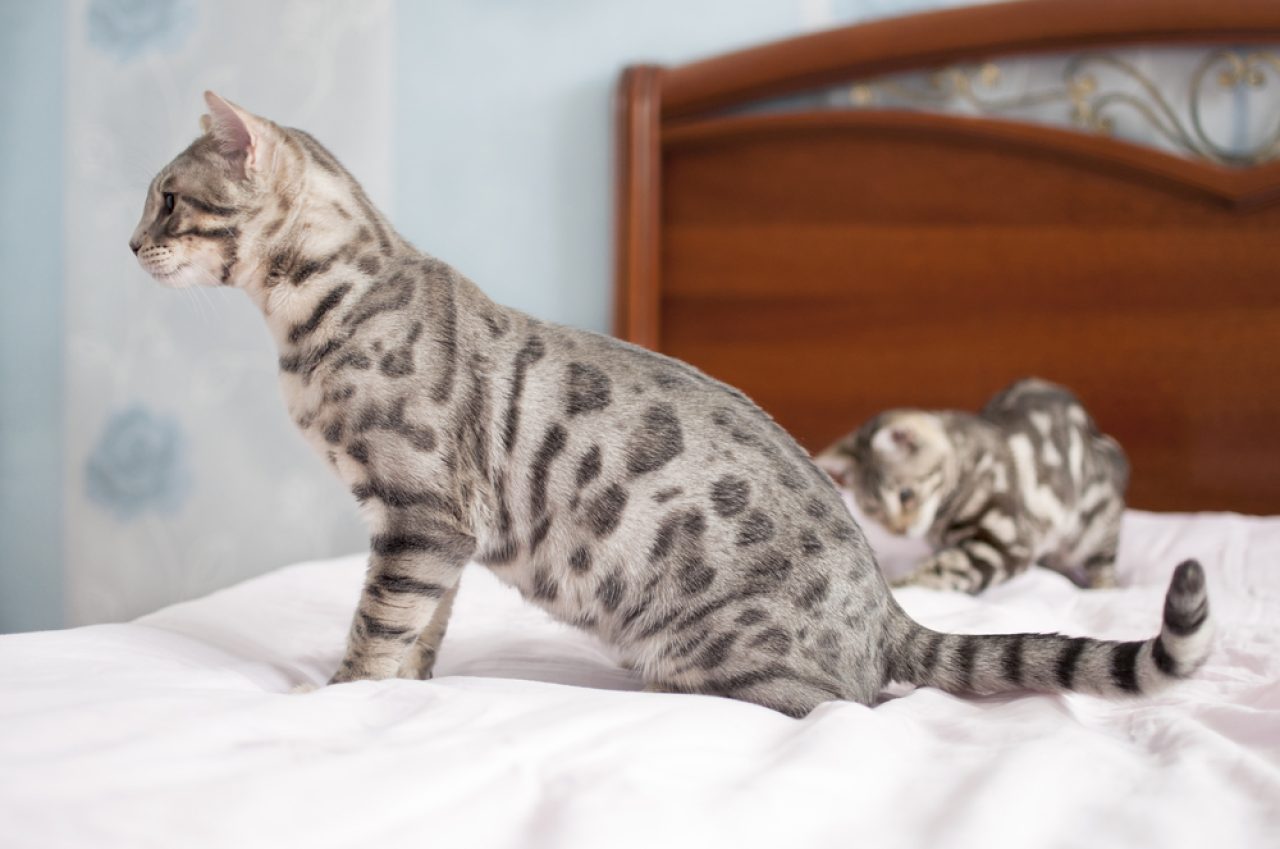
Oh, the first time you catch a glimpse of a Blue Bengal cat roaming around your kitchen, prepare to have a heart attack!
We can agree that these beautiful beasts look like they have escaped the wilderness – and for a good reason, too. We can attest that they’re closer to those pocket-sized leopards than they are to your regular neighborhood tabbies.
Blue Bengal cats are known for bringing a dash of wildlife to your apartment. When watching National Geographic or Animal Planet, you might be surprised to observe how many wild kitties you see on your silver screen remind you of your little leopard.
And, when you figure out your wild one possesses one of the rarest coat colors – blue!? – you won’t be able to hide your happiness!
But, that’s right, Blue Bengals have that blue/grey undercoat with cream/chocolate-colored markings. Other than coat color, though, Blue Bengals aren’t different from regular Bengals. They have the same personality and the same needs.
Oh, and they have the same sense of humor, considering they think knocking things down makes them “likable” (when will they get the memo?!)
What’s the history behind Blue Bengal cats?
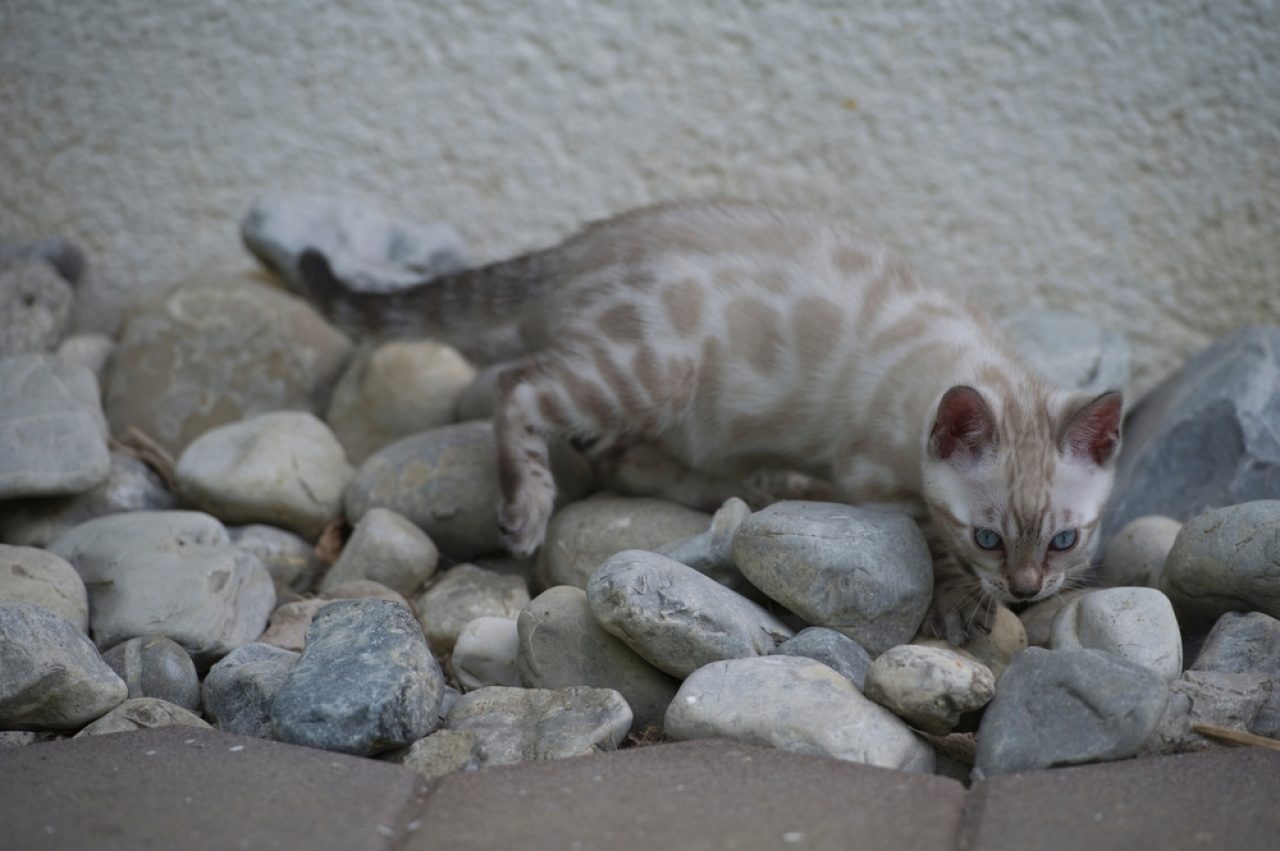
But, how did the Blue Bengals come to be? Whenever we’re talking about these miscellaneous coat colors, there’s something that keeps screaming at me, “Somebody was trying to create a rainbow unicorn creature and ended up making a blue or lavender kitty!”
Needless to say, that’s not what happened with Blue Bengals. As a matter of fact, these mischievous monsters are a pretty novice addition to the family.
Starting from the beginning, though, Bengal cats appeared around the 1960s when Jean Sudgen Mill combined an Asian leopard cat with a domestic cat (Egyptian Mau, Abyssinian, or Burmese).
These small Asian leopard cats are known as Felis Bengalensis. And, of course, that’s why the offspring ended up with the same name. Jean Sudgen Mill was looking to create a domestic cat that resembled a wild cat and that’s exactly what she managed to do, but not without controversy.
Turns out people weren’t ready to accept Bengals. They became banned in many locations (such as Hawaii and New York City). You see, when Bengal cats are born, they’re assigned a symbol that represents the level of wildness.
So, the first generation offspring of an Asian leopard cat and a domestic cat would be an F1, and each generation after that kitten would be an F2, F3, and so on. And, a Bengal cat would be to be at least an F4 before being recognized as a domestic rather than wild cat. But, when did the Blue Bengals come in to play?
Turns out Jean Sudgen Mill’s daughter, Judy Sudgen, continued breeding Bengals to honor her mother’s legacy. She created a bunch of coat color combinations and patterns but not every one of them was formally recognized as a part of the breed – like the Blue Bengal.
What color combinations and patterns can you expect with a Blue Bengal?
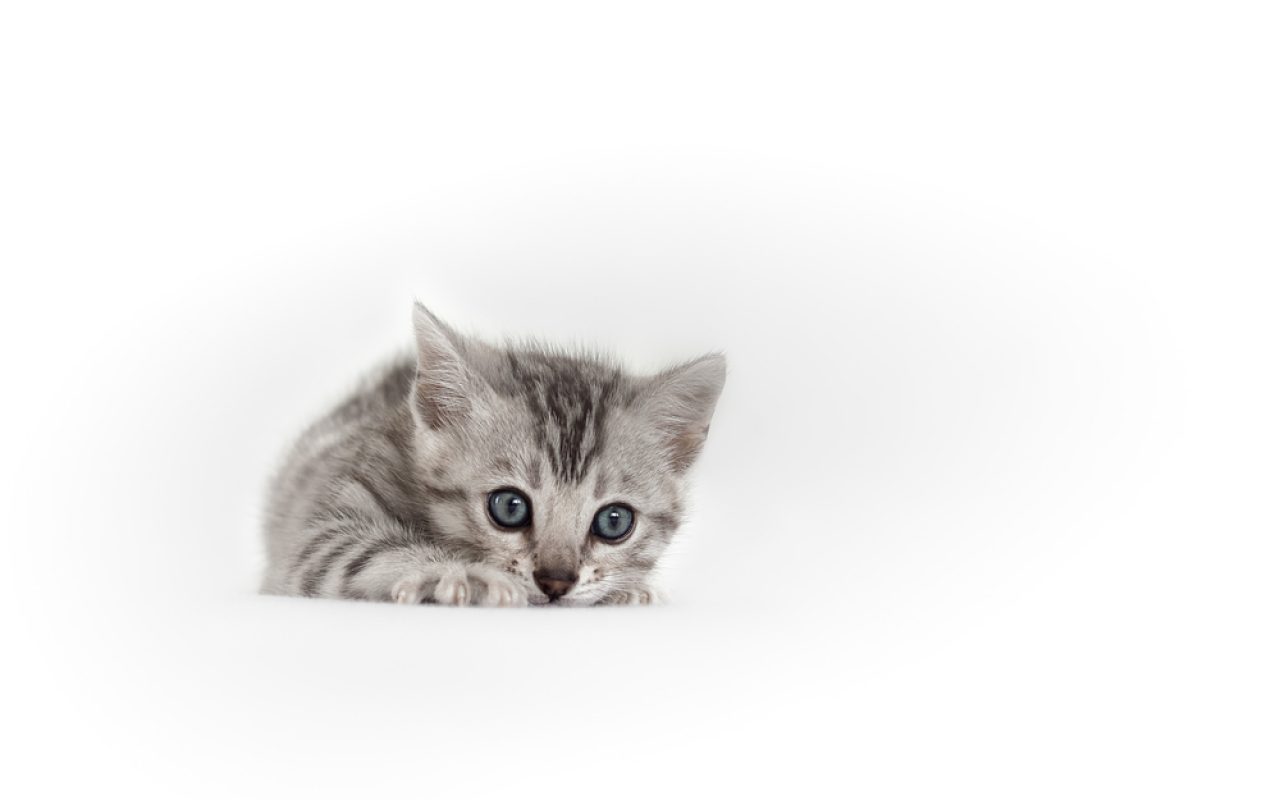
Blue Bengal cats are super rare! And, the fact that they haven’t been formally recognized as a part of the breed can attest to that. But, that’s not surprising because Blue Bengal cats aren’t really… blue. “Wait, what!?” you’re probably screaming at the screen, but we can explain.
Here’s the thing, most cats can only assume one to three of the basic colors, such as white, black, brown, and red. But, due to a recessive gene, some of these colors become diluted and turn to shades such as chocolate, cinnamon, red, blue, lilac, cream, and fawn.
Therefore, the blue color of the coat is, in fact, referring to a diluted black. However, the shade’s only a little lighter because both of the Bengal’s parents possessed the recessive gene responsible for dilute colors.
But, that’s the thing that makes Blue Bengals rare. And, that means we’re pretty happy whenever a breeder manages to achieve that color. Oh, and, let’s not forget that even Blue Bengals don’t always look the same!
When you’re thinking of a Bengal fluffer, chances are you’re thinking of that notorious leopard pattern that graces New York Fashion Week now and then (thanks to Roberto Cavalli, of course). But, Bengal cats (Blue or otherwise) can sport both spotted and marble-patterned coats.
1. Spotted pattern
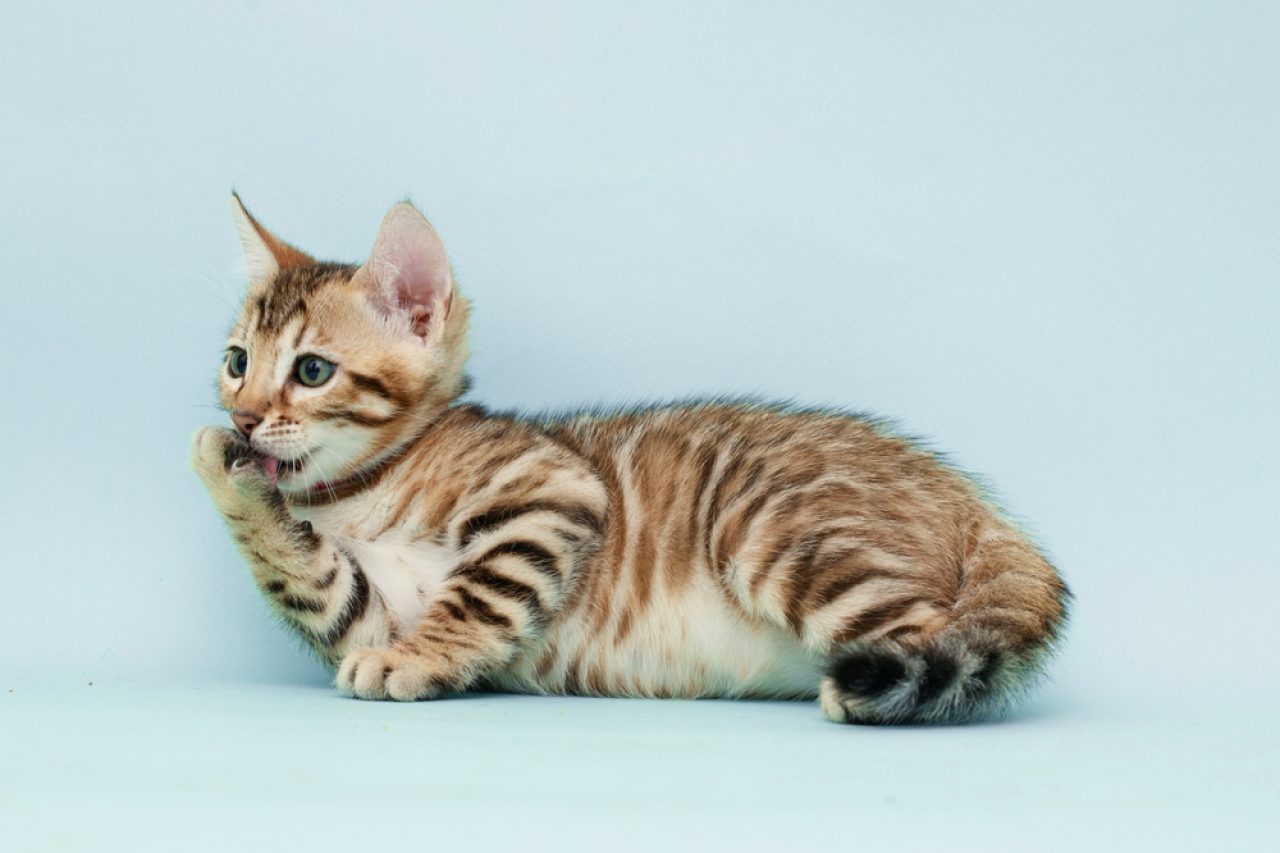
Oh, that leopard pattern Roberto Cavalli keeps “borrowing” from, seems to be the same one Bengal cats have assumed for themselves!
Of course, we’re talking about the golden undercoat with two-toned spots scattered across the body. And, of course, that golden undercoat turns to blue/grey in the case of Blue Bengal cats. But the spotted pattern seems to be the most common one among the Bengal community.
And, that’s pretty dandy, considering that humans adore hanging out with cats that look like dwarfish leopards. Just don’t you dare think that spotted Blue Bengals always wear the same coat!
Come on, they’re some of the most fashionable members of the animal kingdom – they can’t be seen as outfit repeaters! With that little poke at the fashion industry out of the way, these spotted beauties do possess different types of rosettes.
Paw-print, donut, arrowhead, clouded, cluster rosettes – and a number of others – can appear at the same time. Each seems to have gotten the name based on what the rosette resembles. And, as you can assume, each adds a little mystery to the breed.
2. Marbled pattern
A marbled pattern means your Blue Bangel cat has lost her marbles! We’re kidding, but we’re not surprised to notice that the marbled pattern resembles the Rorschach test you’re greeted with at your psychologist’s office.
With asymmetrical swirls, stripes, and splotches, the Blue Bengal marbled pattern makes for an engaging conversation starter. And, Blue Bengals can possess four different types of marbled patterns – sheet marble, chaos, reduced horizontal flow, and horizontal flow.
Here’s a fun fact: The first marbled Bengal appeared around 1987 when Jean Mill created Millwood Painted Desert. Milwood dazzled everybody right off the bat and the public went crazy for the marbled markings!
What’s there to know about Blue Bengal cats?

Blue Bengal cats are trendy for a reason! Bengals, in general, are already an amazing addition to the family considering how affectionate, appreciative, and absolutely adorable they are.
But, Blue Bengals possess that je ne sais quoi you don’t encounter every day. Who (other than you, of course) can claim they have a freakin’ rainbow kitty running around the apartment?
However, getting your hands on a Blue Bengal cat might not be an easy task. Trust me, these beauties are as scarce as hen’s teeth. And that makes them even more exclusive and expensive.
Not to mention that you’re more likely to track them down somewhere across the world than to cross paths with them at your local shelter.
But, on the off chance that there’s a shelter or an adoption agency housing a Blue Bengal, you might be looking at anywhere between $200 and 400 to take her home.
On the other hand, a likely arrangement would be that you unearth one at a reputable breeder and purchase her for anywhere between $1,500$ to $3,000. And, if you’re concerned with age, an older Blue Bengal shouldn’t cost you more than $750 to $1,000.
Nonetheless, when you agree to go through the hassle of getting such a rare beauty (Selena Gomez, we’re coming for your brand), you’re bound to fall head over heels for her.
Therefore, we’re bringing you a rundown of everything you need to know to ensure both of you are happy and healthy together.
1. What do they look like?

As you might have figured out, Blue Bengals aren’t necessarily blue! While they might appear that way when observed under different lighting, they’re a dilute (lighter) shade of black with chocolate/cream rosette markings.
And, Blue Bengals are few and far between because they need both parents to possess the recessive gene for them to assume the blue-colored coat.
But, other than the coat color, Blue Bengals don’t look different from regular Bengals. With long, lean, muscular bodies, short, dense fluff, and golden eyes, they’re entrancing to every human out there.
Go figure they’ve gained planetary popularity. Who wouldn’t want to hang out with a miniature leopard, right!?
2. What kind of purrsonality do they have?
As for purrsonality, the color of the fluff doesn’t affect the way your Blue Bengal cat might behave once you bring her home. As a general rule of thumb, one of the first things you might notice is that Bengals are brimming with energy!
They adore running around the apartment, chasing after all sorts of critters, climbing up trees (or counters), and knocking things down. Trust me, Bengals have boundless energy and they don’t shy away from spending most of the day doing something.
Oh, the only time you should start panicking is when your Bengal stops turning the apartment upside down. But, to make things even better, Bengals are super clever and understand everything you try to teach them.
They’re not little airheads like Persian cats and they definitely don’t belong on the dumbest cat breeds list. They’re pretty much the dogs of the feline world and we love them for that!
3. What do they need for a happy and healthy life?

We might be repeating ourselves, but Blue Bengals have the same needs as regular Bengals. Proper nutrition, plenty of physical activity, and heaps of affection are crucial.
Of course, there are a bunch of other things you should do to ensure they’re happy and healthy. But these three are the seal of the deal.
And, contrary to popular belief, Bengals don’t have special requirements just because they look like they escaped the jungle. They don’t need to spend most of the day outside (although they appreciate the opportunity). They don’t have to have a huge apartment with plenty of space for them to cause trouble (although they don’t mind the extra effort).
What we’re trying to say here is Bengals aren’t different from other cats. Trust me, they want to spend time with you (whether that’s playing, lounging around, or following you to the bathroom).
And, they don’t want to lounge around when they could be playing, running around, and doing other, more physical things.
4. How do you take care of them?

Bengals are fans of mental stimulation! They’re clever little leopards, and they won’t be happy with doing the same thing over and over, although they don’t necessarily have any out-of-the-ordinary needs.
But they prefer having some variety when it comes to food, toys, and physical activity. So, make sure you provide your little leopard with a bunch of interactive toys you can switch around and change once she grows bored of them.
Don’t shy away from teaching her “dog tricks,” such as walking on a leash or playing fetch – Bengals love doing things like that. And, don’t forget to consult with your vet about providing them with different types of treats to keep things interesting.
On the other hand, Blue Bengal cats don’t need much in terms of grooming, brushing, and bathing. That’s courtesy of their short, rosette-patterned coat.
They’re purrfectly capable of taking care of themselves, which means you can focus on doing other things to make them happy. Proper nutrition, plenty of physical activity, and regular veterinarian checkups should ensure your Blue Bengal cat doesn’t deal with any adversity!
So, what are you waiting for? Muster up that courage you need to contact that breeder who keeps popping up on your Instagram Explore Page! Good luck!
